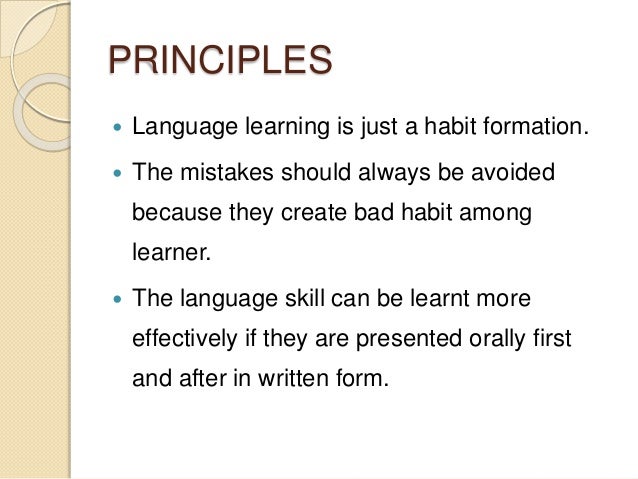Situational Language Teaching
focuses on the
structure of language, speech and vocabulary that is used in the base of the
degree of teaching given, we can distinguish this approach for its emphasis on
the presentation of situational structures, their control in vocabulary and
grammar.
In addition, the
Situational Language Teaching has two main characteristics. -
- focuses on
vocabulary and reading, in the best vocabulary in reading sounds in the best
quality and in the best message
- Analyze the language
so that students have a better performance in the language and learn grammar
rules in a more efficient way.

codontist
disorder:
it is the pillar
of learning; it focuses on the environment in which it is taught
- the act of
receiving knowledge or material.
-repeat to
memorize
-the material is
practiced until it is a personal skill in the student.
- focuses on
forming habits
SLT objectives. -
for the teaching
of languages, vocabulary and grammar rules are used to master the 4 basic
skills. speaking, writing, listening.
Study plan. -
the curriculum of
situational teaching is designed in structural activities, grammar and
exercises are applied to students, oral participation and others for a good
performance.
advantage:
- It is constant
in the teaching of grammatical patterns making the teaching of the language
easier and more practical.
disadvantages:
Many premises
underlying the approach have been criticized. For example, Chomsky showed that
the structural and the behavioristic approaches to language are simply
incorrect as they do not explain the fundamental feature of language learning:
the ability to create novel and unique sentences. Children do not acquire their
mother tongue through repetition and habit formation. There must be, however,
an innate predisposition that leads to a certain kind of linguistic competence.
Situational
language teaching, invented by British linguists, is a method of teaching that
is mostly focus on developing speech.
Speech ,also called the heart of the speaking ability,
is develop in the situational language teaching by using real situations of our
lives to find relationship between English and our daily life.
all
the speech is learn by using common situation of our daily life in each class
or lesson given, by showing simple situations that our students can relate to ,we
make them mote interest in the subject that we are trying to teach , this way
we can enhance our English teaching lessons.
characteristics
of situational language teaching
-based
on how much we make English part of our daily life we can develop an habit of
learning speech more proficiently.
-mistakes
are avoided completely because they can create bad habits of learning.
-teaching
English orally is the best way to learn the language after learning to speak
you can start learning writing,
-using
real life situations in class is the best way to make students interest in
learning English.
-the
learning of new words and new meanings have to be related to our linguistic and
cultural context.
-using
daily routine speech is essential for language learning, if the students must
know which words can be used in each situation.

Approach:
Theory of language
The structual view of language is the view behind the Oral Approach and Situational Language Teaching. Speech was viewed
as the basis of language and structure as being at the heart of speaking
ability.
Theory
of learning:
- language learning is habit-formation
- mistakes are bad and should be avoided, as they
make bad habits
- language skills are learned more
effectively if they are presented orally first, then in written form
- analogy is a better foundation for language
learning than analysis
- the meanings of words can be
learned only in a linguistic and cultural context
Design:
Objectives
- a practical command of the four
basic skills of a language, through structure
- accuracy in both pronunciation and grammar
The syllabus:
uses a structural syllabusand a word list
Types of learning techniques and activities:
- A situational presentation of new sentence patterns
- drills to practice the patterns
Procedure:
- Procedures move from controlled to freer practice
of structures
- Procedures
move from oral use of sentence patterns to their automatic use in speech,
reading and writing.
Comentarios
Publicar un comentario